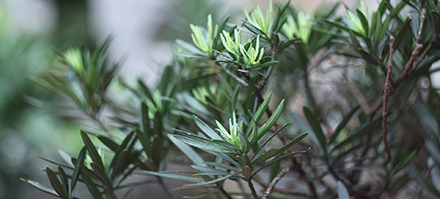An ancient forest with a lineage that stretches back to when New Zealand was part of the supercontinent Gondwana has been losing trees to erosion for years. Podocarp trees at Marlborough’s Onamalutu Scenic Reserve have been lying in the Ōhinemahuta River since July, but they are just the latest to fall victim to the riverbank’s ongoing erosion. Source: Stuff NZ
Emails seen by Stuff show the Department of Conservation was looking into fallen trees in the reserve in 2018, as a result of flood events “over the last couple of years”.
But people who live beside or visit the forest frequently say the trees have been falling over for longer than that. DOC confirmed this week it was now working on a longer-term solution.
Māori carver Andrew MacDonald spent much of his childhood playing at the Onamalutu Reserve, about 40km west of Blenheim.
“I still often come here for picnics, I really enjoy the podocarp forest, it is a beautiful reserve, but it should be looked after properly.
“We want to protect these resources, from our perspective as carvers and artists, but we also want to protect it for the future,” Mr MacDonald said.
He explained how, back in 2018, he asked if he could have fallen logs for carving. DOC told him the trees were the council’s responsibility once they fell into the river. The logs were actually still DOC’s responsibility, but they needed a resource consent from the council.
So, this time, when he found more trees in the river, MacDonald approached the council for resource consent in November last year and was told it would cost $1000 with no guarantee his application would be successful.
MacDonald, who wanted the logs for two gateways along the Queen Charlotte Track, decided against the application.
Robin Smith had also been going to the reserve since he was a child.
“I go there quite often, and I have seen those ancient trees falling for almost 25 years. Nothing has been done since the 1980s,” Mr Smith said.
DOC South Marlborough operations manager Phil Bradfield said this week the riverbank erosion accelerated around the middle of last year when trees fell into the river, and erosion had been happening to a lesser extent before that.
“When the erosion escalated, we engaged a consultant to provide river engineering advice on measures to provide a longer-term solution to the erosion.
“The consultant is now preparing a resource consent application on our behalf for removal of the trees currently in the river and also for work to divert the river flow away from the riverbank to reduce the erosion and prevent further loss of large native trees.”
Mr Bradfield said earlier this month DOC informed the three iwi with cultural association to the area before Christmas of its intention to apply for resource consent for the tree removal and river work.
DOC allowed for cultural use of timber from fallen native trees for carving as appropriate and the timber from the trees recovered from the river potentially could be made available for carving use, he said.
Te Rūnanga a Rangitāne o Wairau general manager Nick Chin said the reserve was one of the last remnants of podocarp forest left in the region and it needed protection.
He was happy that DOC and the council would soon have a solution.
Malcolm Warnes had been living at Onamulutu Rd for the past six years.
Mr Warnes walked up and down the Ōhinemahuta River almost every day with his two dogs and was passionate about conservation.
He said he had seen trees falling over for the six years he had lived out there.
“Those 400-year-old trees are falling down because there has been nothing done for years by the people who are responsible for the care and guardianship of that forest,” Mr Warnes said.
“It is a precious gem that is slowly being destroyed and I personally think that is entirely unacceptable.”
Mr Warnes explained how the riverbank was eaten away by floodwater anytime the area got a decent rain.
He said there was nothing to hold the water back off the hills due to forestry. University of Otago Botany associate professor Dr David Orlovich said podocarps were an ancient group of trees and shrubs that dated back to Gondwana.
Gondwana, or Gondwanaland, was a supercontinent that existed from about 550 million years ago, and started to break up during the Jurassic period, about 180 million years ago.
“The podocarps are a really unique feature of the Southern Hemisphere flora and New Zealand species are a very important part of this. The threat of erosion is a major issue for these local populations.
“While kahikatea, tōtara and mātai do all grow throughout New Zealand, they were once much more common, and these small, remnant old-growth patches are their last bastion, and thus are of great significance in their local area,” he said.








